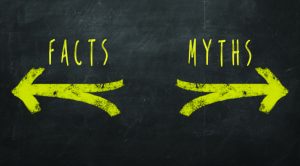 ATLANTA—A key sign of myositis can be mechanic’s hands on the thumb side of a patient’s index finger. Patients with giant cell arteritis (GCA) shouldn’t have to try prednisone before tocilizumab. Rituximab at fixed intervals is not essential for the remission of anti-neutrophil cytoplasmic antibody (ANCA) associated vasculitis. In a session at the 2019 ACR/ARP Annual Meeting, two rheumatology experts shared these and other pearls of wisdom to help rheumatologists in the clinic, while also dispelling common myths.
ATLANTA—A key sign of myositis can be mechanic’s hands on the thumb side of a patient’s index finger. Patients with giant cell arteritis (GCA) shouldn’t have to try prednisone before tocilizumab. Rituximab at fixed intervals is not essential for the remission of anti-neutrophil cytoplasmic antibody (ANCA) associated vasculitis. In a session at the 2019 ACR/ARP Annual Meeting, two rheumatology experts shared these and other pearls of wisdom to help rheumatologists in the clinic, while also dispelling common myths.
Cautioning that new discoveries may make “today’s pearls tomorrow’s myths,” John Stone, MD, director of clinical rheumatology at Massachusetts General Hospital, Boston, offered the following myth-busting observations and tips.
Myth: Temporal artery biopsy is the gold standard for the diagnosis of GCA.
 “With modern imaging and the incredible techniques we have with PET [positron-emission tomography], ultrasound, CTA [computed tomography angiogram] and MRA [magnetic resonance angiogram], we know patients who have large vessel involvement and may not have temporal involvement at all. And there are many reasons temporal artery biopsies can be negative,” Dr. Stone said. “The key diagnostic test in a patient with possible GCA is the history. A carefully taken history is the rheumatologist’s scalpel.”
“With modern imaging and the incredible techniques we have with PET [positron-emission tomography], ultrasound, CTA [computed tomography angiogram] and MRA [magnetic resonance angiogram], we know patients who have large vessel involvement and may not have temporal involvement at all. And there are many reasons temporal artery biopsies can be negative,” Dr. Stone said. “The key diagnostic test in a patient with possible GCA is the history. A carefully taken history is the rheumatologist’s scalpel.”
Pearl: A dry cough can be a symptom of occult GCA. “For patients who are over the age of 50 with any complaint above the head and neck who have signs of inflammation, GCA needs to be considered,” he said.
Myth: Tocilizumab should be reserved for GCA patients for whom prednisone has failed. Dr. Stone pointed to the GIACTA trial results, which showed the prednisone-only group sustained remission in only 14% or 18% of GCA cases, depending on the study group, compared with more than 50% of GCA cases for the tocilizumab groups.1
“It’s crazy to think about using a drug that’s going to fail most of the time—and is toxic—as the only starting approach to treating this [disease],” Dr. Stone said.
Pearl: Tongue ulcers in GCA occur on the lateral portion of the mid-tongue. The same goes for granulomatosis with polyangiitis (GPA).
Myth: Patients with ANCA-associated vasculitis require fixed intervals of B-cell depletion to maintain remission. Spacing treatment out at increasingly longer intervals—first four months, then six months and then eight months, for example—can accomplish the same goal, Dr. Stone said.
GPA & Beyond
Pearl: GPA can cause a facial droop. This effect occurs because the seventh cranial nerve runs through the middle ear space. When patients with GPA get otitis media and granulomatous inflammation in the middle ear, the nerve can compress, leading to a facial droop, he said.
Pearl: Churg-Strauss granulomas (cutaneous extravascular necrotizing granuloma)—typically on the elbows—are a common cutaneous manifestation of GPA. “You have to examine patients for these,” Dr. Stone said. “They don’t hurt. Patients will not notice them. But they’re a key clue to the possibility of GPA.”
Myth: Cyclophosphamide is more powerful than rituximab for treating GPA.
Pearl: “Methotrexate is a crummy treatment for vasculitis. The same goes for azathioprine and MMF [mycophenolate mofetil],” Dr. Stone said. “We have much better drugs now—and safer drugs. These old [treatments] that don’t work very well should be put out to pasture.”
Pearl: In IgG4-related disease, hypocomplementemia implies renal involvement. “We don’t fully understand why that is the case,” Dr. Stone said, “but it really correlates well with renal disease.”
Myth: Weight loss occurs in patients with IgG4-related disease because of overwhelming systemic inflammation. “That’s not why the weight drops off these patients,” Dr. Stone said. “It drops off these patients because they have pancreatic disease—exocrine pancreatic failure.”
More Pearls
During the session, Sterling West, MD, professor of medicine at the University of Colorado School of Medicine, offered additional advice.
His first rule for every case is to look for symptom causes other than a connective tissue disease. “First, ask yourself, could these symptoms be due to an adverse drug effect? Could it be due to an infection, cancer or a clot? There are some other things, but these four are particularly important, because all of them are treated differently than increased immunosuppression,” he said.
Consider sleep apnea and abuse in fibromyalgia. “You’re going to see people who have particularly severe fibromyalgia. And one of the things that has impressed us is the number of people who have sleep apnea as the cause,” Dr. West said. “We ask them, do they snore? … The other element we see is a history of sexual or physical abuse, particularly in childhood or teenage years.”
With gout, consider energy drinks. “Rule out energy drinks [as a cause], particularly for younger individuals that come in with gout,” he said. “Energy drinks have a lot of fructose in them. Fructose is broken down into ATP [adenosine triphosphate]—that’s what gives you your energy—and ATP is broken down into uric acid.”
Dr. West noted seronegative rheumatoid arthritis (RA) candidates may have calcium pyrophosphate dihydrate crystal deposition disease (CPPD) or pseudogout. “They may never have had an attack that sounds like pseudogout,” he said.
He advised, “Don’t make the diagnosis of ANA [antiphospholipid antibody] negative lupus. It’s very, very rare.”
The index finger could hold a clue to myositis in interstitial lung disease patients. A myositis panel may be indicated in these patients. Dr. West said, “Look at the radial side of their index finger—that’s where you’ll see mechanic’s hands. It may be all over their hands. But if it’s subtle, it’ll always be on the radial side of their index finger.”
Beware certain foods for patients with immune-mediate necrotizing myositis. It’s known that statins may induce myositis, but some foods—oyster, portabella mushrooms and red yeast rice—can as well.
“There are some foods that have statins in them,” Dr. West said. “It’s important to tell your people who do have statin-induced myositis, if you take them off statins, to stay [away from] those particular foods.”
Thomas R. Collins is a freelance writer living in South Florida.
Reference
- Stone JH, Tuckwell K, Dimonaco S, et al. Trial of tocilizumab in giant cell arteritis. N Engl J Med. 2017 Jul 27;377(4):317–328.



